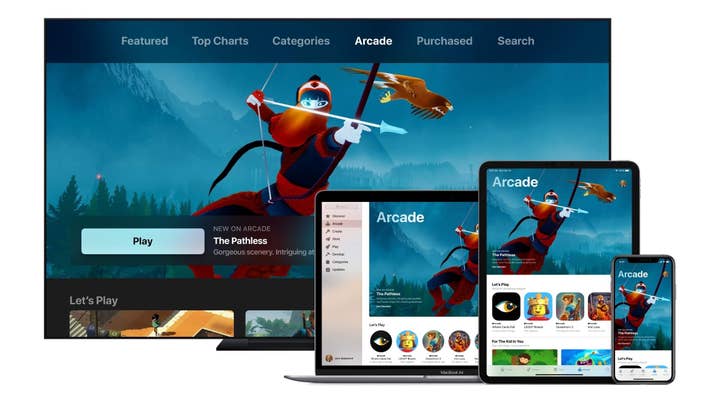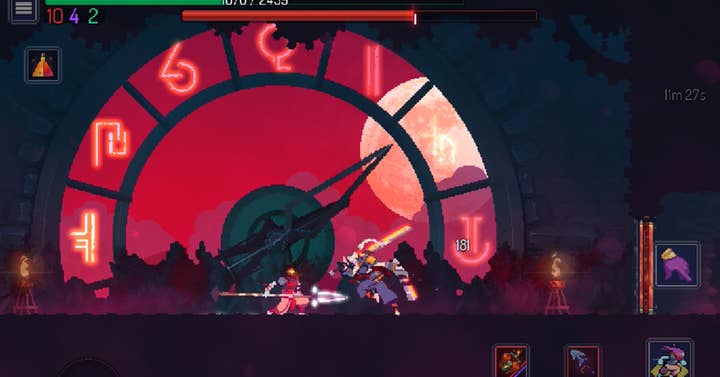A crash course in porting your game to mobile
In a PGC talk, Playdigious' Xavier Liard explored mobile opportunities for PC and console titles, and the do's and don'ts of porting
Porting successful PC and console games to mobile has become common practice.
Vampire Survivors is the latest example in a long line of PC hits triumphantly making the jump to smart devices. Poncle's title was downloaded one million times in just a week when it launched in December.
Soon after, the studio revealed that it had planned to port Vampire Survivors to mobile sooner, but couldn't find a business partner who agreed with its monetisation approach, so eventually decided to do it all in-house.
While this particular story has a happy ending, it does illustrate the challenges of successfully porting a game to mobile, which Poncle has been vocal about.
This happened to be the topic of a Pocket Gamer Connects talk in London last week, from Playdigious CEO Xavier Liard. His company is behind the ports of successful mobile titles including Dead Cells, Cultist Simulator, and Mini Metro.
In his talk, Liard looked into the different routes available to developers wishing to port their game to mobile, and addressed the questions they should ask themselves before making the jump.
The different distribution options on mobile
Looking at opportunities on mobile for a successful PC or console game, Liard identified three options:
- 'Traditional' release on the AppStore and/or Google Play (as a pay-to-play title, or with a 'free trial and pay to unlock the full game' model)
- Mobile subscription services
- Third-party distribution stores
He particularly looked into the "new opportunity" presented by subscription services and third-party stores, with a quick focus on releasing in China as well.
Apple Arcade
Liard said there are roughly three categories that every game falls into on Apple Arcade: original, great, or classic.
Understanding these categories is key to understanding whether your title could fit on Apple's subscription service. The 'originals' are new games that are launching on console/PC and Arcade at the same time. The 'greats' are games that have already been successful on the App Store before heading to Arcade a year or so later. 'Classics' are games like solitaire and the like.
"If you have a successful paid game on [iOS], you should definitely try to get into 'greats'," Liard advised. "Your game is [then] both a paid game and an Apple Arcade game, so that's huge, and there is no impact on the paid version, you don't have any drops in revenues for the paid version, so you have both, it's really the best thing to do."

Netflix Games
Netflix's communication about its games subscription service has been a bit hit-and-miss, Liard said, with players not really aware (yet) about the games offered on the platform.
From a technical point of view, releasing on Netflix is "a little bit strange," he continued.
"For games that are published by Netflix, you need to do a free version, and inside the free version, you need to add the Netflix login. So essentially you can find the game directly on the App Store, even if you don't have a Netflix account, but when you want to play the game, the login system will ask you for your Netflix login, you can subscribe if you don't have an account and so on.
"So it's a smart play to keep existing users to stay in Netflix, but also to have some users say 'hey, I want to play this game, so let's start a subscription for Netflix so I will get the movies but also the games'."
Liard said he "couldn't disclose too much" about Netflix's business model for mobile games, but added that "it's not really based on performances of the game" but more "reliant on discussions you can have with them."
"There are a lot of indie games that have reached Netflix Games," he continued. "They are pretty selective but that's something that can be pretty interesting to follow."
Google Play Pass
More discreet than its Apple counterpart, Google does boast its own mobile game subscription, Play Pass.
"The big problem with mobile is the fragmentation, especially on Android"
"It brings a strong part of our revenues for indie games," Liard said. "So this is definitely something to have a look at. There is lots of competition, but it's still good additional revenues. And you don't have it in conflict with your traditional pay-to-play."
When players find your game on Google Play, they will be given the choice to either pay directly for the game, or subscribe to the service (if your game is in Play Pass) and play through that .
Again, Liard couldn't go in too much detail about revenue shares as neither Apple nor Google want to disclose their business models, but he did say that "like most subscription services," it is based on usage.
"Basically the more people are playing your game, the more revenues you get," he said.
Mobile third party distribution
Stores outside of the App Store and Google Play can present interesting opportunities. Liard mentioned options such as the Samsung or Huawei app stores, but also things such as Korean shop One Store, Bemobi, or Gameloft's own shop.
Sometimes it's worth looking at lesser known avenues, such as phone carriers having their own stores in emerging countries, or Jpay, which is an app store that is approved for the US prison system.
"It's a very small [market], but in the end robust and super interesting," Liard said. "It's not millions but it's still revenue."
Chinese distribution
The Playdigious CEO also touched upon the Chinese market, which he said is "difficult" but can be pretty lucrative if you manage to launch in the country.
"If you are to sell a game in China, you need to work with local distributors that have the government's approval," he explained. "It takes around two years if you are lucky. For example, we did the port and the publishing of Dead Cells. And in China we are working with a company called Bilibili. Google Play isn't available in China, so you have a lot of different stores.
"[Bilibili] has its own store where people can download games, and they also have some kind of YouTube video [platform]. So it's very useful because they do both the acquisition and the [promotion]. We sold two million units of Dead Cells in China at around €3-4 so that's pretty interesting."
Liard added that in some cases "you need to modify the game to comply with the Chinese government," and warned again about the difficulties on the way, with the approval for international games sometimes frozen for months at a time.
"It's very stressful, you should not bet everything on this," he said. "But the Chinese market is huge."

Porting your game: ask yourself the right questions
Now that you've identified the routes you could take when it comes to releasing your game on mobile, take the time to assess whether your game is ready for it, when you should do it, and so on.
"My recommendation is first to see what makes sense commercially," Liard said. "The first thing is: how much money could this project bring? You can do some kind of cost estimate, define some targets, and then try to pitch Apple Arcade and Netflix Games first, because you can discuss [it] and see if what they offer covers your [estimates] and gets your margins safely.
"Especially if this is your first project, I would say it's better to go to Apple Arcade and Netflix Games [first] because you don't have to manage distribution and so on, you just have one relationship and that's it. However, it's pretty difficult to get in there to be honest. But if you have a very good game, I think it's something you should look at."
Liard said that another big question you should ask yourself is: is it technically doable?
"Especially if this is your first project, I would say it's better to go to Apple Arcade and Netflix Games [first]"
"The big problem with mobile is the fragmentation, especially on Android. There's such a [variety] of devices, of shapes and so on. So if your game is on Unity this could be easier, but even with Unity, you will have some issues."
He continued: "On the technical side, one of the challenges is RAM memory space. On Nintendo Switch you have 8GB, on mobile phones it's common to go below 2GB [or] you have some optimisation issues. If your game is on Nintendo Switch there is a 80% probability that you can bring [your game] to mobile, and you just need to look at the memory."
The diversity of mobile devices can also drive QA costs up, Liard added.
"There's new OS coming all the time so it's not like [when] you release a game on Nintendo Switch, and then you're done," he said.
New iOS and Android versions releasing frequently means you need to do regular checks to make sure your game still runs well and is high quality across the board.
On the marketing side of things, Liard said that the approach should sensibly be the same as the promotion of a console and PC game, though mobile is "more geared towards influencers." He also mentioned Google Play's 'pre-register' option, which he said can "provide a huge boost."
"You should not be afraid to price the game below [the PC/console price] [...] People don't buy a [mobile] game above €10"
Finally, the last questions you should ask yourself are: when to release and at what price?
"If you don't have Apple Arcade or Netflix Games, the best idea is to release the mobile version between nine to 18 months after the PC release," Liard said. "You should not be afraid to price the game below [the PC/console price]. Let's say your game is €20, it's better to price your game at €9 – people don't buy a [mobile] game above €10."
For Apple Arcade, Liard recommended developers to start the conversation with Apple before the release of the game.
"If your game is already released, it's much more difficult to get on Arcade. If it's already released, you need to get into the 'great' category, meaning that you need to release your game first on iOS, wait to be successful, and then convince them to get into this section. But if your game is not released yet, you can release as 'original' and that's very interesting."
More GamesIndustry.biz Academy guides to Selling Games
Our guides to making money from video games cover various aspects of the publishing process, whether you're a young game developer about to start a new project or an industry veteran:

